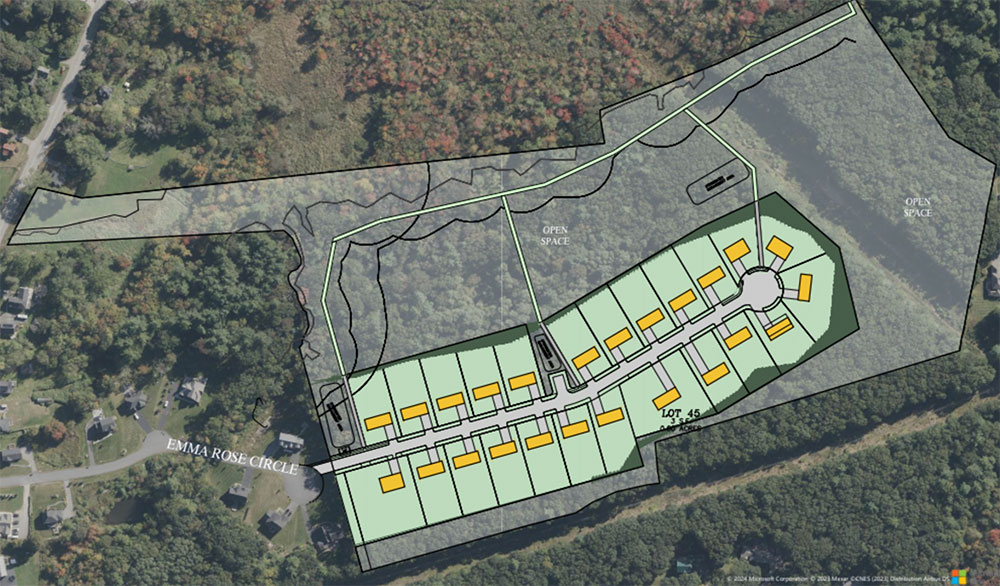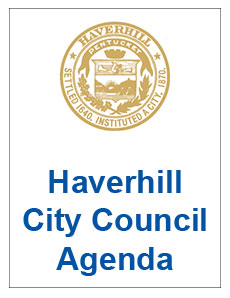Asking for a special permit to build 24 single-family homes on Emma Rose Circle, the developer will make his case using a relatively new zoning law at a Haverhill City Council hearing Tuesday night.
JR Builders President Larry R. Palmisano’s plans show rectangular, uniform lots, each sharing a border with its neighbor, on both sides of Emma Rose Circle. A few appear to be larger and more irregularly shaped, particularly those on the cul-de-sac at the end of the road. With the houses sharing 20 acres, 30 acres of surrounding woodlands remain untouched. Emma Rose Circle, which feeds into Broadway west of Interstate 495, is to be extended because Palmisano built a subdivision filling the space around the existing stretch six years ago.
According to the city’s 2020 Flexible Development ordinance, developers can add extra lots beyond the by-right maximum, which is 18 in this case, if they bring the city “significant amenities” and leave a certain proportion of their parcels undeveloped. The law aims to create alternatives to the layout of standard subdivisions, encourage environmental preservation, “protect the value of real property” and “perpetuate the appearance of the City’s traditional New England landscape.”
The relatively new law came with “Haverhill 2035,” a 2020 update to the city’s master plan, which aimed to balance “growth” with “charm,” according to a speech by then-Mayor James J. Fiorentini.
In an effort to satisfy the provisions that allow more lots, Palmisano offered to build a network of trails around the development, deed the city undeveloped land—including a nine-acre parcel on Amesbury Road in the Watershed Overlay Protection District—and make a $72,000 donation to the city’s Affordable Housing Trust.
He initially drafted plans for an extra eight lots, but Economic Development and Planning Director William Pillsbury Jr. told councilors in a letter Friday the developer had misinterpreted a formula in the ordinance, and recommended they accept Palmisano’s proposal if the number be revised from 26 to 24. The two properties initially slated for homes are now labeled “stormwater management areas.”
Community Development Director Andrew K. Herlihy expressed support for the project, noting the Affordable Housing Trust’s need for more money and how the proposal “prevents sprawl.”
While the land in question used to be zoned for agricultural use, the city solicitor determined that is no longer the case as of March 2023. Two parcels comprise the area for the development, but only one of the sale agreements was included in the agenda items for the Tuesday night council hearing. One 31.84-acre parcel is currently owned by the Estate of Frank J. Dudley, Carol Szpuk, Frank J. Dudley Jr. and Robert Dudley. The other, which has a different owner, is said to be 8.74 acres in the agreement, though a letter to the city indicates the total of the two to be 50 acres.
Though the City Council agenda released May 3 for the Tuesday evening hearing says the proposal is for 26 homes, plans shared with WHAV indicate it was reduced to 24. If Palmisano is not granted the special permit, another schematic shows he would divide the entire 50-acre parcel into 18 large lots.
The Haverhill City Council meets Tuesday night at 7, remotely and in-person at the Theodore A. Pelosi Jr. Council Chambers, room 202, Haverhill City Hall, 4 Summer St., As a public service, 97.9 WHAV plans to carry the meeting live.


